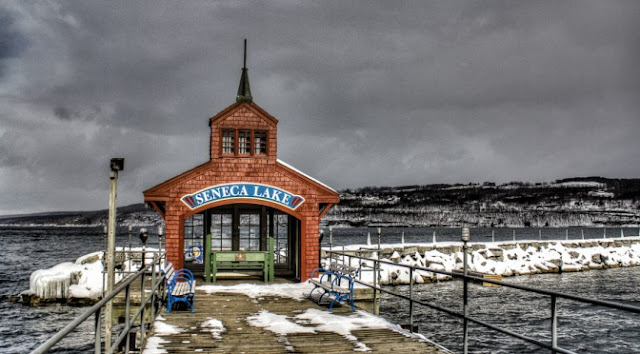This particular wine is made by Fox Run Vineyards, based right on the north end of Seneca Lake in Penn Yan, NY - part of the Finger Lakes region, which is named for a series of long, narrow lakes in New York's western parts between Rochester and Cortland.
The Finger Lakes region is actually an AVA, first recognized in 1982, and featuring a "Continental" climate. It encompasses 11,000 acres over 11 lakes, and is compared often to German vineyards in terms of climate and production. According to my research, the first commercial wines to come out of the Finger Lakes were released around 1862. After a few fits and starts, including that nasty Prohibition business, the region has seen a renaissance and become quite an attraction, with wine tours, hotels, and B&Bs contributing to the tourism of that region. Today, there are over 100 vineyards based in the region.
 |
| A balmy summer's day in New York's Finger Lakes region. |
Today's wine is a blend of 92% Merlot and 8% Cabernet Sauvignon, 2012 vintage. The color is ruby red, with a little fading along the meniscus of the wine. It's still young, so I don't anticipate any bricking to occur. Still, what a nice color.
The nose is a strong mixture of dark fruit skins - I'm thinking black cherry here - and alcohol. The second element surprises me, since the wine is only 12% ABV - a hair less than most other wines.
The wine started off mellow, with some dry strawberry and plum flavors. After a few minutes, though, it opened up nicely with round, warming, and generally "plummy" flavors throughout, and on the finish. In addition, there a dryness here that I like. It's evident enough to give the wine some character, but not enough to distract from the other jammier flavors like strawberries and plums.
I feel the Cabernet portion of it gives some of that "roundness" I detected; merlot can be a soft and boring grape at times but it held up its end of the bargain in this bottle as well. There's not a lot of acidity here, which I like. All in all, a good bottle that was very drinkable, and am looking forward to trying more Finger Lakes offerings in the future.














